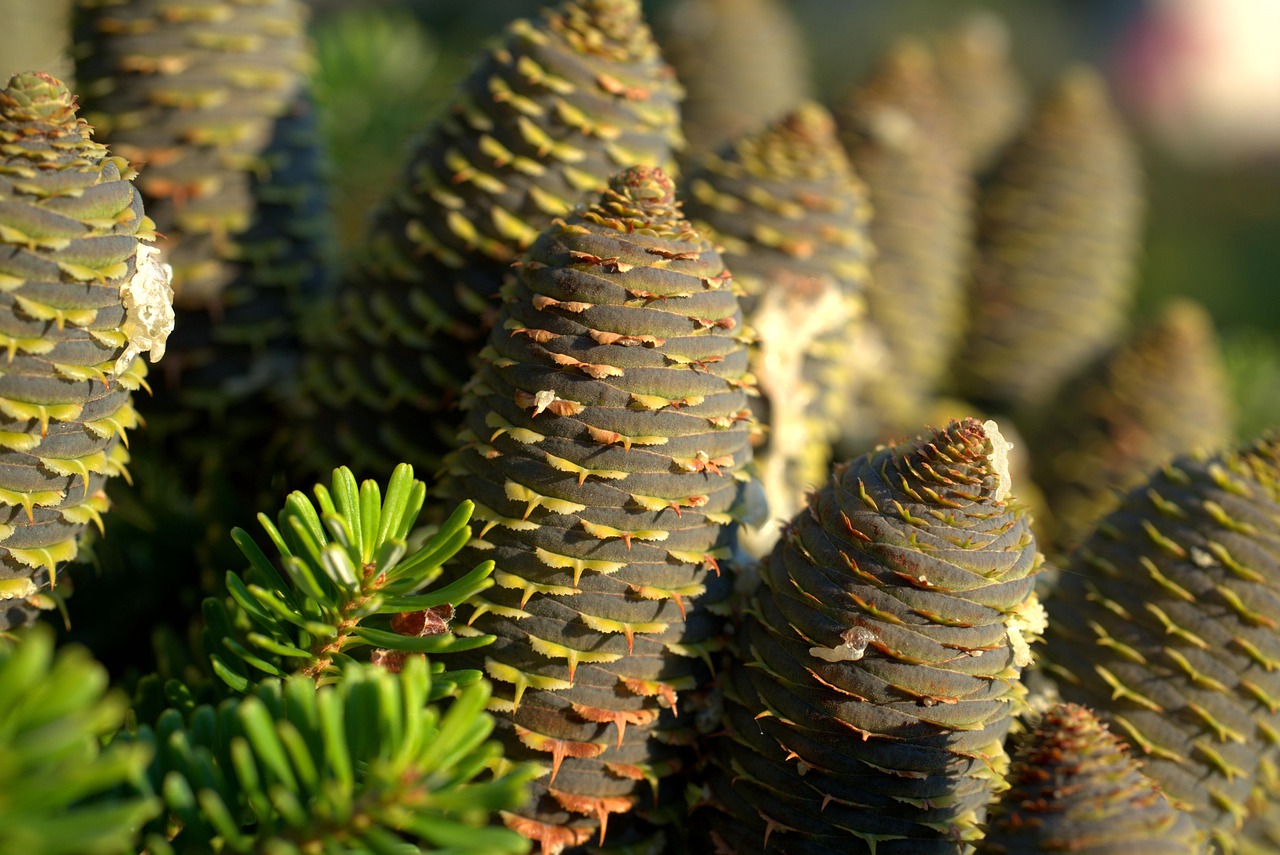The white pine tree, known for its rapid growth, can reach heights of 80 to 100 feet and a diameter of up to 3 feet. Under optimal conditions, it grows about 24 to 36 inches per year, making it a valuable species for timber and shelter.
White pine trees (Pinus strobus) are native to eastern North America. They are well-regarded for their tall, straight trunks and flexible branches. These characteristics make them ideal for various uses, including timber production and providing shelter in forested areas. Their adaptability to different soil types and climatic conditions contributes to their popularity among landowners and forestry professionals alike.

The growth rate of white pine trees is influenced by several factors, including soil quality, water availability, sunlight exposure, and competition from other vegetation. In optimal conditions, white pines can thrive, showing impressive growth rates that benefit both timber harvesters and wildlife. Understanding these aspects is crucial for forestry management and conservation efforts.
Factors Affecting Growth Rate
Several elements come into play when evaluating the growth rate of white pine trees. It is essential to consider the following factors:
- Soil Quality: White pines prefer sandy loam soils with good drainage. Nutrient-rich soils promote faster growth.
- Water Availability: Adequate moisture is vital. Drought conditions can severely hinder growth rates.
- Sunlight Exposure: Full sunlight allows white pines to maximize photosynthesis, leading to healthier growth.
- Competition: Other plants and trees can compete for resources. Reducing this competition can enhance growth rates.
To illustrate the impact of these factors on growth rates, the following table summarizes average growth rates under various conditions:

| Soil Type | Growth Rate (inches/year) | Water Availability |
|---|---|---|
| Sandy Loam | 24-36 | Adequate |
| Clay | 12-24 | Moderate |
| Poorly Drained | 6-12 | Low |
The above table shows how different soil types can significantly influence the growth rate of white pine trees. The ideal sandy loam soil supports the fastest growth, while poorly drained soils lead to much lower growth rates.
In addition to these factors, climate plays a critical role in determining the growth of white pine trees. They thrive in regions with cold winters and warm summers. The average annual temperature range for optimal growth is between 60°F to 70°F. Severe weather conditions such as heavy snowfall or extreme drought can negatively impact growth rates.
Another aspect to consider is the age of the tree. Young white pines tend to grow faster than older ones. During their initial years, they can experience rapid vertical growth as they establish their root systems and reach for sunlight. This early growth phase is crucial for their long-term health and timber potential.

Applications of White Pine Trees
The fast growth rate of white pine trees makes them an attractive choice for several applications:
- Timber Production: White pine wood is lightweight, easy to work with, and resistant to shrinking and swelling, making it popular for construction, furniture making, and cabinetry.
- Shelter for Wildlife: These trees provide essential habitat for various species, including birds and small mammals. Their dense foliage offers cover from predators.
- Erosion Control: The extensive root systems of white pines help stabilize soil, making them beneficial for preventing erosion in hilly or unstable areas.
The combination of rapid growth and versatile applications makes white pine trees an important resource in forestry and conservation. Their contributions extend beyond timber production to include ecological benefits that support biodiversity and land management practices.
Planting and Cultivating White Pine Trees
To maximize the growth rate and health of white pine trees, proper planting and cultivation techniques are essential. Understanding the best practices for growing these trees can lead to successful timber production and enhanced wildlife habitats. This section covers important steps and considerations for planting white pines.
Site Selection
The first step in cultivating white pine trees is selecting the right site. Factors to consider include:

- Sunlight: White pines thrive in full sun. Choose a location that receives at least six hours of direct sunlight each day.
- Soil Type: As mentioned earlier, sandy loam soils are ideal. Ensure the soil drains well to prevent root rot.
- Space: Allow adequate space between trees to reduce competition for light and nutrients. A spacing of 10 to 20 feet apart is often recommended.
Soil Preparation
Before planting, preparing the soil is crucial. This involves:
- Testing Soil: Conduct a soil test to determine pH levels and nutrient content. White pines prefer slightly acidic soils with a pH of 5.5 to 6.5.
- Amending Soil: Based on test results, amend the soil with organic matter, such as compost or peat moss, to enhance fertility and structure.
- Tilling: Loosen the soil by tilling to a depth of at least 12 inches. This helps improve drainage and root penetration.
Planting Techniques
The planting process is vital for ensuring the healthy establishment of white pine trees. Follow these steps:
- Selecting Seedlings: Choose healthy seedlings from a reputable nursery. Look for straight trunks and well-developed root systems.
- Digging Holes: Dig planting holes that are twice as wide and the same depth as the root ball of the seedling.
- Positioning: Place the seedling in the hole, making sure the root collar is level with the surrounding soil surface. Backfill with loosened soil.
- Watering: Water thoroughly after planting to eliminate air pockets and promote root settling.
Caring for White Pine Trees
Once planted, ongoing care is necessary for optimal growth. Here are some key care practices:
Watering
Proper watering is essential, especially during the first few years after planting. Consider the following guidelines:
- Frequency: Water deeply once a week during dry spells to promote deep root growth.
- Avoid Overwatering: Ensure that the soil remains moist but not soggy. Overwatering can lead to root diseases.
Pest and Disease Management
White pines can be susceptible to various pests and diseases. Monitoring is crucial. Common threats include:
- Pine Weevil: Infests young trees, causing stunted growth. Early detection and treatment with insecticides can help control this pest.
- Diseases: Fungal issues such as white pine blister rust can affect health. Pruning infected branches and maintaining good air circulation can mitigate these risks.
Fertilization
If soil tests indicate nutrient deficiencies, fertilization may be necessary. Here are some tips:
- Timing: Apply fertilizer in early spring before new growth begins.
- Types of Fertilizer: Use a balanced fertilizer with an N-P-K ratio suitable for evergreen trees, such as 10-10-10.
Harvesting White Pine Trees
Understanding when and how to harvest white pine trees is crucial for maximizing timber yield. Harvesting should be timed according to the tree’s growth stage and market demand.
Optimal Harvest Age
White pines typically reach their maximum timber value between 30 to 50 years of age, depending on growth conditions. Factors influencing this include:
- Growth Rate: Faster-growing trees may reach marketable size sooner than slower-growing ones.
- Disease Resistance: Healthy trees with fewer diseases tend to have better timber quality at harvest.
Harvesting Techniques
When it comes time to harvest, employing proper techniques is essential for sustainability:
- Selective Cutting: This method allows some trees to remain standing, promoting future growth and habitat preservation.
- Clear-Cutting: While effective for immediate timber yield, this technique requires careful planning to ensure ecological balance in the area.
Cultivating white pine trees involves careful consideration of site selection, soil preparation, planting techniques, and ongoing care practices. These measures contribute significantly to their growth rate and overall health, providing valuable resources for timber and wildlife habitats.
Environmental Impact of White Pine Trees
White pine trees play a significant role in their ecosystems. Their growth rate and adaptability allow them to contribute positively to both the environment and human needs. This section explores the environmental benefits of white pine trees, including their contributions to air quality, wildlife habitats, and soil health.
Air Quality Improvement
White pines are effective at improving air quality in several ways:
- Carbon Sequestration: These trees absorb carbon dioxide during photosynthesis, helping to mitigate climate change by storing carbon in their biomass.
- Oxygen Production: Through the process of photosynthesis, white pines release oxygen, contributing to cleaner air for surrounding communities.
- Pollutant Absorption: White pines can absorb various pollutants, including sulfur dioxide and nitrogen oxides, further enhancing air quality.
Wildlife Habitat
White pine trees provide critical habitat for numerous species. Their dense foliage and sturdy structure create ideal living conditions:
- Nesting Sites: Birds such as woodpeckers, chickadees, and blue jays commonly nest in white pines. The tree’s height and branch structure offer safe places for nesting.
- Food Sources: The seeds of white pine cones are a valuable food source for various animals, including squirrels and birds. The foliage can also provide cover for small mammals.
- Protection: The dense canopy offers shelter from predators and harsh weather conditions, making white pines vital for many wildlife species.
Soil Health and Erosion Control
The presence of white pine trees significantly contributes to soil health and helps prevent erosion:
Soil Stabilization
The extensive root systems of white pines help anchor the soil in place. This is particularly important in areas prone to erosion:
- Root Structure: The deep and wide-spreading roots of white pines effectively hold the soil together, reducing the risk of landslides or erosion during heavy rains.
- Organic Matter Contribution: As the trees shed needles and branches, they contribute organic matter to the soil, enhancing its fertility and structure.
Soil Nutrient Enhancement
White pines also play a role in nutrient cycling within forest ecosystems:
- Nitrogen Fixation: Though not directly a nitrogen-fixing species, white pines benefit from symbiotic relationships with certain fungi that assist in nutrient absorption from the soil.
- Improved Soil Structure: The decomposition of organic matter from fallen pine needles enhances soil aeration and water retention capabilities.
Cultural and Economic Significance
Beyond their environmental benefits, white pine trees hold cultural and economic significance. They have been valued by various communities for centuries:
Cultural Importance
White pines are deeply rooted in the cultural heritage of many indigenous peoples in North America:
- Traditional Uses: The bark and wood of white pines have been used for various purposes, including making canoes, tools, and shelter.
- Spiritual Significance: In some cultures, the white pine is considered a sacred tree, symbolizing peace and protection.
Economic Value
The economic impact of white pine trees is substantial, especially in regions where forestry is a critical industry:
- Timber Industry: White pine wood is highly sought after for its quality and versatility in construction, furniture making, and paper products.
- Tourism and Recreation: Forests populated with white pines attract visitors for activities such as hiking, birdwatching, and camping. This boosts local economies through tourism.
Sustainable Management Practices
To maximize the benefits derived from white pine trees while minimizing negative impacts on the environment, sustainable management practices are essential:
Sustainable Harvesting Techniques
Sustainable harvesting ensures that timber production does not compromise forest health:
- Selective Logging: This method allows for the careful removal of specific trees while preserving overall forest structure.
- Replanting Initiatives: After harvesting, replanting young white pines helps maintain population levels and supports ecosystem function.
Forest Management Plans
Developing comprehensive management plans can help balance ecological health with economic needs:
- Biodiversity Conservation: Maintaining a mix of tree species alongside white pines promotes biodiversity and resilience against pests and diseases.
- Monitoring Programs: Regular monitoring of tree health and growth rates can guide management decisions and ensure sustainable practices.
The environmental impact of white pine trees is profound. Their contributions to air quality, wildlife habitats, soil health, cultural significance, and economic value highlight their importance in maintaining healthy ecosystems. Implementing sustainable management practices ensures that these benefits can be enjoyed by future generations.
Future Prospects of White Pine Trees
As the importance of sustainable forestry practices becomes increasingly recognized, the future prospects for white pine trees appear promising. Their rapid growth rate, adaptability, and ecological benefits position them as a key species in both timber production and environmental conservation efforts.
Adapting to Climate Change
White pines are likely to play a critical role in adapting to changing climate conditions. Their resilience and ability to grow in a variety of soil types make them suitable for various environments:
- Drought Resistance: With proper management, white pines can withstand periods of drought better than some other species, making them valuable in regions experiencing climate variability.
- Shifting Habitats: As temperatures rise, white pines may expand their range northward, potentially filling ecological gaps in new areas.
Technological Advances in Forestry
The integration of technology into forestry management is revolutionizing how we cultivate and manage white pines:
- Remote Sensing: Utilizing satellite imagery and aerial drones can help monitor tree health, growth rates, and forest density. This data enables more informed management decisions.
- Precision Forestry: Advances in equipment allow for more accurate planting, thinning, and harvesting practices, which can enhance growth rates and reduce waste.
Community Involvement and Education
Engaging communities in the management of white pine forests fosters a sense of stewardship and responsibility:
- Educational Programs: Schools and local organizations can establish programs that teach about the importance of white pines and sustainable forestry practices.
- Community Planting Days: Organizing events where community members participate in planting trees can strengthen community bonds while promoting environmental stewardship.
Final Thoughts
The white pine tree stands as a symbol of resilience and utility. Its rapid growth rate makes it an ideal candidate for timber production, while its ecological contributions enhance biodiversity and improve air and soil quality. Sustainable management practices not only ensure that white pines continue to thrive but also support the broader ecosystem in which they exist.
As we navigate challenges such as climate change and habitat loss, the significance of white pine trees becomes ever more pronounced. They offer numerous benefits that extend beyond their timber value, contributing to environmental health and cultural heritage. By fostering a deeper understanding of their role within ecosystems and implementing sustainable practices, we can secure the future of white pine trees for generations to come.
The path forward involves a commitment from individuals, communities, and policymakers to prioritize the health of our forests. Together, we can harness the power of white pines to promote sustainability, enhance wildlife habitats, and contribute positively to our environment. The ongoing relationship between humans and these magnificent trees will be pivotal in shaping a healthier planet.
